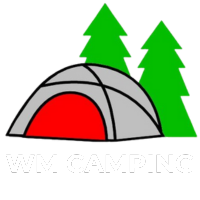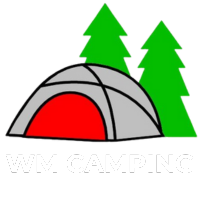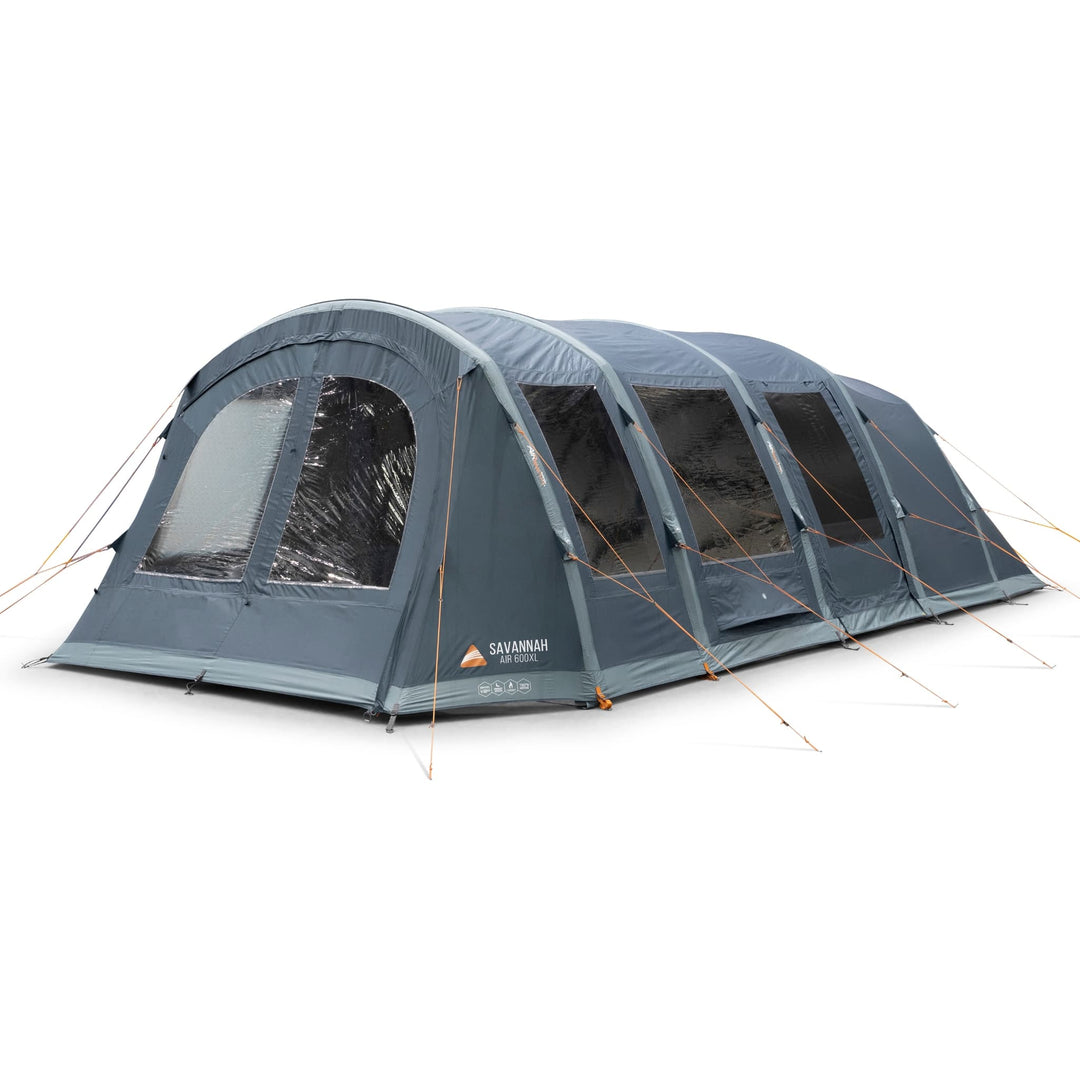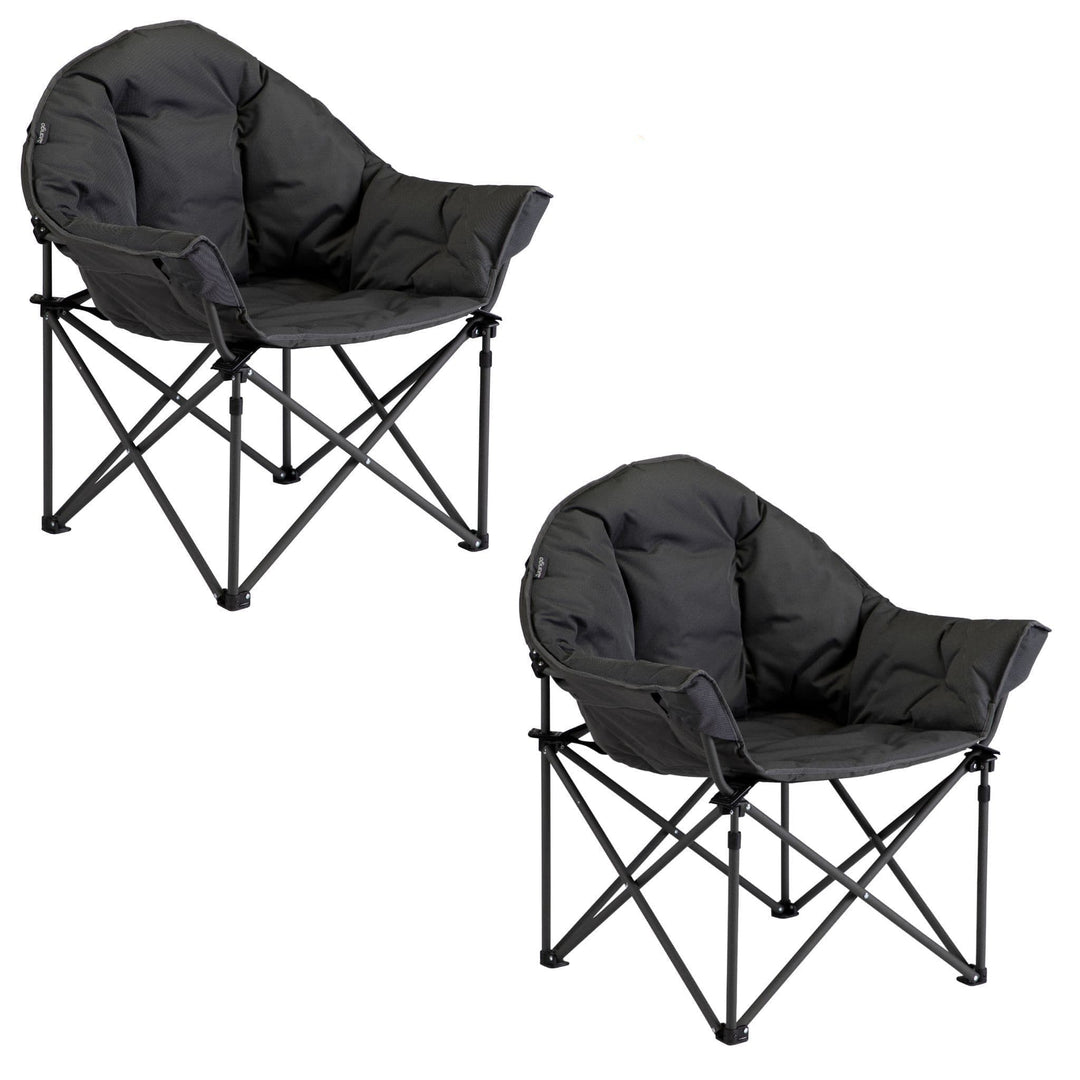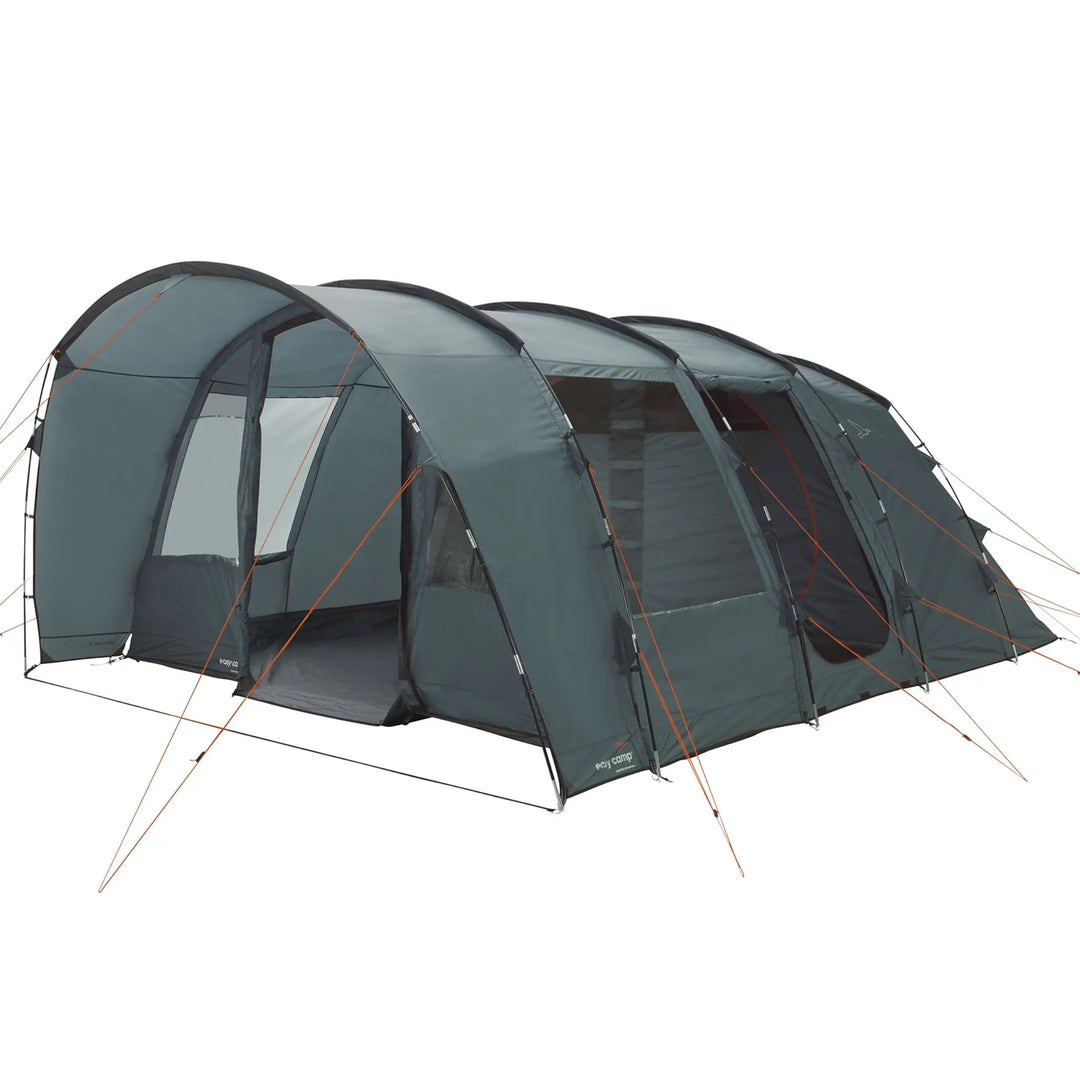Tent Buying Guide

Tent Buying Guide: Choosing the Right Tent for Your Camping Trips
At WM Camping. we know that finding the right tent can make or break your camping experience. Whether you're heading off for a family holiday, a weekend escape, a festival, or a challenging backpacking trip, choosing the right model is essential. This comprehensive tent buying guide is designed to help you understand what to look for so you can choose with confidence.
Tent Terms Explained
Berth: The berth tells you how many people a tent can sleep. However, it doesn’t account for gear or luggage. For extra comfort, we recommend sizing up. For example, two campers with kit would benefit from a 3- or 4-berth tent. Also consider the tent’s layout - some models offer larger bedrooms or more generous living spaces.
Hydrostatic Head (HH): This rating measures how waterproof your tent fabric is. The higher the number (measured in mm), the more water-resistant the fabric. A HH of 2,000mm to 3,000mm will cope with typical UK rain, while 5,000mm+ offers robust protection for longer trips or harsher weather. Adventure-grade tents, often used for mountain expeditions, can go even higher.
Sewn-in Groundsheet: A groundsheet stitched to the tent’s flysheet helps to keep out insects and drafts, and improves weatherproofing. A sewn-in groundsheet also reduces heat loss and helps maintain a more stable internal temperature.
Flysheet: The outer layer of the tent, providing protection from rain and wind. Some flysheets are treated with UV-resistant coatings to increase longevity.
Inner Tent: The breathable fabric section inside the tent where you sleep. Proper ventilation in the inner tent helps prevent condensation, especially important for polyester models.
Poles: Support structures that give the tent its shape. These can be fibreglass, steel, aluminium, or inflatable beams. The material and design of poles significantly affect the weight, strength, and stability of the tent.
Tunnel Tent: Shaped like a tunnel, these tents offer excellent internal space and headroom, great for family camping. They tend to offer excellent weight-to-space ratios but can be more vulnerable to crosswinds if not pitched carefully.
Dome Tent: Smaller and stable, dome tents are ideal for weekend trips or festivals. They are self-supporting and easy to move around.
Geodesic/Semi-Geodesic Tent: Designed for strength and stability, these tents are built for challenging conditions, often used for backpacking or mountain expeditions. Multiple intersecting poles provide enhanced rigidity.
Vis-à-vis Tent: Features sleeping compartments facing each other with a central living area, offering privacy - ideal for families or groups wanting separate spaces.
Polycotton Fabric: A blend of polyester and cotton, polycotton tents are breathable and reduce condensation, ideal for warm weather camping. They’re heavier but offer excellent climate control.
Polyester Fabric: Lightweight, quick-drying, and affordable, though it can be prone to condensation in humid conditions. It is the most commonly used material for general camping tents.
Canvas Fabric: Durable and breathable, but heavier and requires maintenance to keep it waterproof. Canvas tents are ideal for extended stays and glamping.
Nylon Fabric: Lightweight and strong, often used in backpacking tents. While it’s more susceptible to UV degradation, some high-end models have added UV coatings.
Tent Fabrics Compared
| Fabric Type | Key Features | Best For |
|---|---|---|
| Polyester | Lightweight, quick-drying, affordable, moderate UV resistance | Family tents, weekend camping |
| Polycotton | Breathable, reduces condensation, good climate control, high UV resistance | Long camping trips, warm climates |
| Canvas | Very durable, breathable, traditional feel, needs maintenance | Glamping, extended stays |
| Nylon | Very lightweight, strong, prone to UV degradation without coating | Backpacking, ultralight ca |
Key Considerations:
-
Polycotton tents are better for warm weather due to their breathability and are quieter in windy conditions.
-
Canvas tents excel in durability but are heavy and need to be seasoned properly to maintain waterproofing.
-
Polyester is the most common for family and weekend tents because it’s affordable and low maintenance.
-
Nylon is a favourite for serious backpackers due to its lightweight properties.
Tent Shapes Compared
-
Tunnel: Best for maximum space and headroom; stable when pitched correctly, but larger tunnel tents may require careful alignment to minimise wind impact.
-
Dome: Good stability and easy to pitch; ideal for short trips, lightweight camping, and situations where you need a freestanding tent.
-
Geodesic: Maximum strength for exposed conditions; suitable for mountaineering and winter camping.
-
Vis-à-vis: Great layout for families needing privacy; two sleeping pods with a communal area in the middle.
-
Tipi: Cone-shaped, great for ventilation and traditional camping; spacious but sometimes lacking a groundsheet.
-
Cabin: Straight walls and excellent internal space; ideal for family camping trips where internal standing height is a priority.
-
Bell Tent: Single pole, spacious and durable — popular for glamping and longer stays.
Types of Tents
Pop-Up Tents
Quick to pitch and ideal for festivals, short overnight stays, and beginners. They’re highly portable but generally offer minimal weather resistance and limited durability.
Weekend Tents
Designed for ease and comfort for a couple of nights. Focused on quick pitching and basic comfort. These tents are usually compact and light, ideal for casual campers.
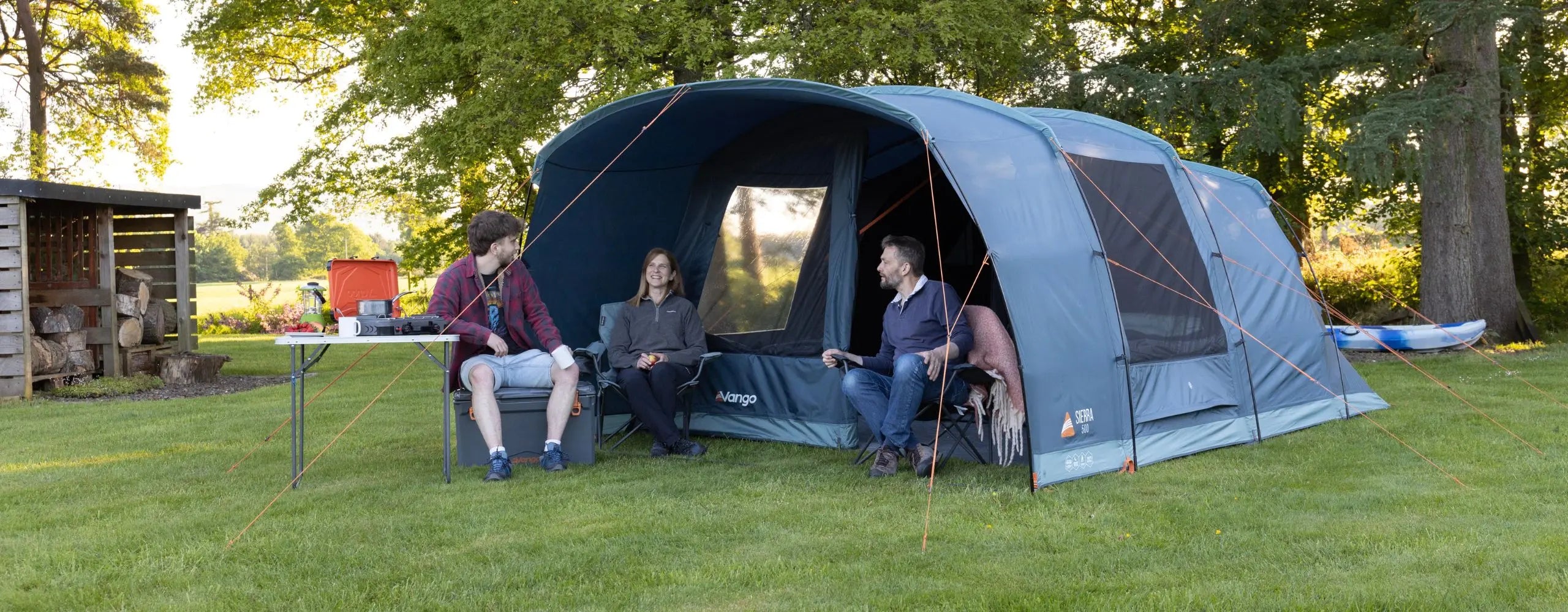
Festival Tents
Simple and affordable. Ideal to cope with unpredictable British summer rain and provide just enough space. Many festival tents prioritise low cost, but it’s worth investing in models with a sewn-in groundsheet and a hydrostatic head of at least 2,000mm.

Family Tents
Multi-room layouts, large living areas, tall headroom. These tents often feature darkened bedrooms to help families sleep past sunrise and sewn-in groundsheets for added comfort. Look for flexible porch options to create extra space for muddy boots and wet kit.
🔗 Shop Family tents for large families
Inflatable Tents
Replace traditional poles with air beams. Simple, quick pitching. Brands like Vango’s AirBeam technology are highly rated for their reliability and resilience in wind. Inflatable tents are particularly popular with families for their easy setup.

Backpacking Tents
Lightweight, compact, and quick to set up. Look for 1-2 person models with excellent waterproofing and small pack sizes. Weight matters here — ultralight options are available under 2kg.
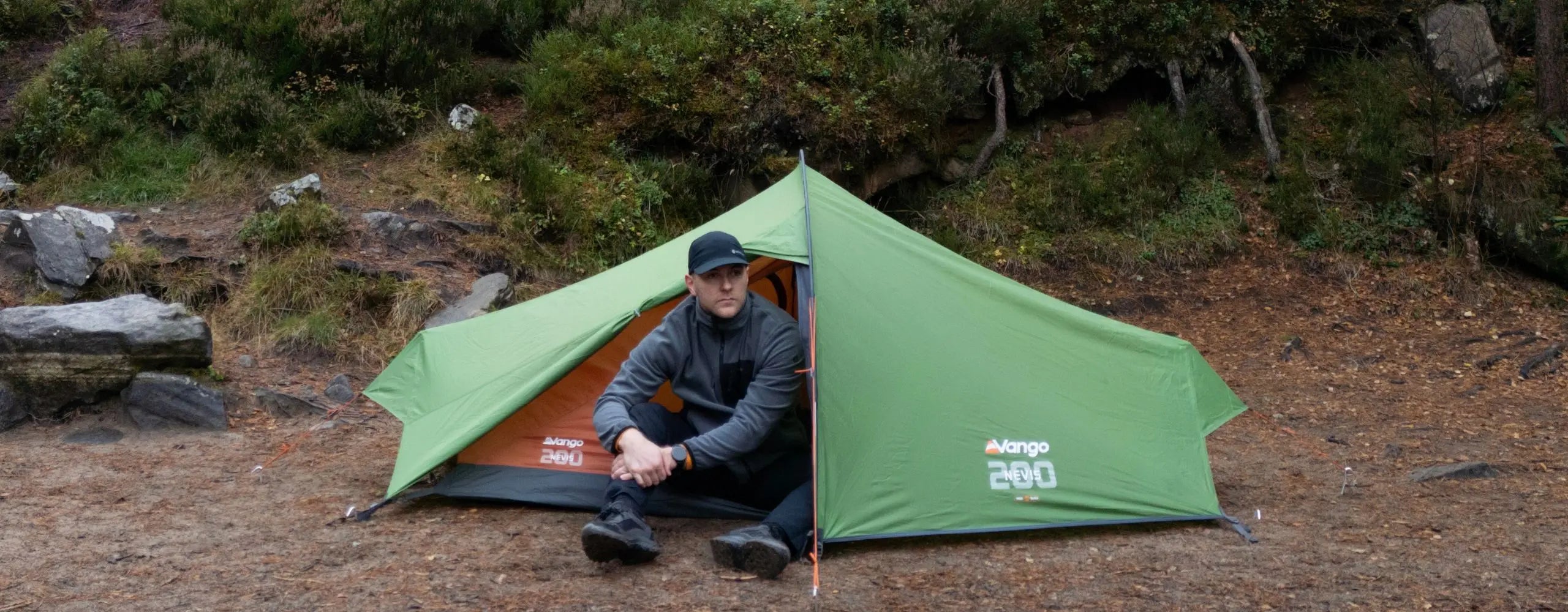
Bell Tents
Classic style with a single centre pole. Often made from canvas or polycotton, offering a more luxurious camping experience. Bell tents provide ample space and excellent breathability but require more setup time.
Tipi Tents
Traditional designs, simple single-pole structure, good for group camping with excellent ventilation. Some modern tipi tents come with built-in groundsheets for extra comfort.
Roof Top Tents
Popular for overlanding. Mounted on the roof of a car, easy to deploy, with an integrated mattress. They allow you to camp anywhere your vehicle can go but do come at a higher price point.
Bivvy Tents
Minimalist shelters, prioritising light weight for extreme backpacking and mountaineering. These offer minimal headroom but are extremely efficient in terms of pack size and weight.
Tent Poles Explained
Fibreglass Poles: Lightweight and budget-friendly but can break under heavy stress. Fibreglass is common in affordable family tents but less suited to rough weather.
Steel Poles: Durable and ideal for large family tents, but heavy. Best for semi-permanent setups.
Aluminium Poles: Lightweight and more robust than fibreglass. Common in higher-end backpacking and touring tents.
DAC Aluminium: Premium aluminium poles known for strength and low weight. Used in many expedition-grade tents.
Inflatable Poles (Air Beams): Easy and fast pitching. Modern TPU materials make these beams very durable. Look for tents with multiple inflation points for added resilience.
Tent Features to Consider
-
Bedrooms: Multi-room options offer privacy. Some tents have blackout or darkened bedrooms to improve sleep quality.
-
Living Space: Essential for families or longer stays. Tall tents with standing headroom add comfort.
-
Ventilation: Mesh panels, adjustable vents, and air flow systems reduce condensation and improve comfort.
-
Porches & Awnings: For additional sheltered space. Great for wet-weather cooking or storing outdoor kit.
-
Darkened Bedrooms: Sleep better with reduced morning light. Helpful for children and summer camping.
-
Cable Entry Points: Handy for campsites with electric hook-ups.
-
Groundsheet Types: Sewn-in for better protection; loose for lighter weight and flexibility.
-
UV Protection: Important for prolonging the life of polyester fabrics.
-
Pitching Style: Outer-first pitching preferred in wet conditions to keep the inner tent dry.
Tent Accessories
-
Tent Footprints: Add an extra layer under your tent to protect the groundsheet. They make packing up easier by keeping the base clean.
-
Tent Carpets: Improve comfort underfoot, particularly on long holidays.
-
Windbreaks: Provide privacy and block the wind. Essential for coastal campsites.
-
Porches and Extensions: Expand your living space; perfect for dining or additional storage.
-
Lighting Systems: Hanging lanterns, string lights, integrated LED systems.
-
Tent Repair Kits: For emergency fixes.
-
Power Access: Cable entry points, sockets.
-
Guy Lines and Pegs: Quality gear improves stability in poor weather. Always pack spares.
Tent Care and Maintenance
-
Pitching: Always choose level ground, clear of sharp stones. Use a footprint if available.
-
Cleaning: Sponge clean with lukewarm water. Avoid soaps that can strip waterproofing. Never machine-wash.
-
Drying: Always dry completely before storage to prevent mould and mildew.
-
Reproofing: Use specialist sprays to maintain waterproof coatings every couple of years.
-
UV Protection: Apply UV-resistant spray to prolong fabric life, especially important for polyester tents.
-
Storage: Store loosely in a cool, dry place. Avoid compression sacks for long-term storage.
Tent Size Guide
| Number of People | Recommended Berth | Extra Space (for gear) |
| 1 | 2-Berth | Yes |
| 2 | 3-4 Berth | Yes |
| 4 | 5-6 Berth | Yes |
| 6+ | 8 Berth+ | Essential |
Tip: Always go one berth up from the number of people to allow for kit and comfort.
Common Tent FAQs
How long will my tent last? With proper care — drying after each trip and avoiding pitching under extreme tension — a tent can last many years. UV exposure and repeated pitching can wear fabrics over time.
What size tent do I need? Plan for an extra berth for each camper if you want room for bags and gear.
What is a good waterproof rating for UK camping? A Hydrostatic Head of 2,000mm is a minimum; 3,000mm+ is ideal for British weather. Expedition tents can reach 5,000mm or more.
Are inflatable tents durable? Yes, air tents are built to be robust. Brands like Vango have air beams designed to withstand strong winds. Regular checks of air beams and valves ensure longevity.
Can you repair a tent pole? Yes, fibreglass and aluminium poles can be repaired with repair sleeves or replacement sections. Repair kits are widely available.
What is the best tent for family camping? Tunnel tents or inflatable tents with multiple bedrooms and a large living area are ideal.
How do I stop condensation in my tent? Ensure good ventilation. Open vents and avoid cooking inside the tent. Choosing breathable materials like polycotton can also help.
How do I clean a tent? Use lukewarm water and a sponge. Avoid detergents and machine washing.
Is wild camping legal in the UK? Wild camping is generally not permitted in England, Wales or Northern Ireland without landowner permission. Scotland allows it under the Outdoor Access Code.
How important is UV protection for tents? Very important. UV exposure breaks down tent fabrics over time, so a UV-resistant tent will last longer.
Are darkened bedrooms worth it? Yes, they make sleeping more comfortable, especially in summer. Blackout technology is a big improvement for family campers.
Common Tent Buying Mistakes to Avoid
-
Buying too small: Always size up for comfort.
-
Ignoring the Hydrostatic Head: Waterproofing is vital for UK conditions.
-
Underestimating pack size and weight: Important for backpackers.
-
Forgetting about ventilation: Helps prevent condensation.
-
Overcomplicating: If you want a quick pitch, consider inflatable models.
-
Not considering accessories: Footprints and carpets greatly improve comfort and tent life.
-
Disregarding UV resistance: Key for extending tent lifespan.
-
Overlooking pitching style: Inner-first pitching can be a problem in wet weather.
At WM Camping, we stock a wide range of family tents, inflatable tents, weekend tents, and backpacking tents to suit every kind of camper. Browse our full collection today and get ready for your next outdoor escape.
Browse Tents
If you’re ready to look at options, you can explore our full tent range below:
👉 Browse All Tents
👉 Family Tents
👉 Inflatable Tents
Need Help Choosing a Tent?
We specialise in helping people choose tents that suit how they actually camp. Whether you’re planning a family holiday, a weekend away or your first camping trip, we’re always happy to offer honest advice.
Tent Help & Advice
For more buying guidance, care tips and expert advice, visit our main tent information hub:
👉 Tents Information & Advice Hub
Related Tent Guides
You may also find these guides useful:
👉 Tent Buying Guide
👉 Air Tents vs Poled Tents
👉 Polyester vs Polycotton Tents
👉 Tent Care & Maintenance Guide
